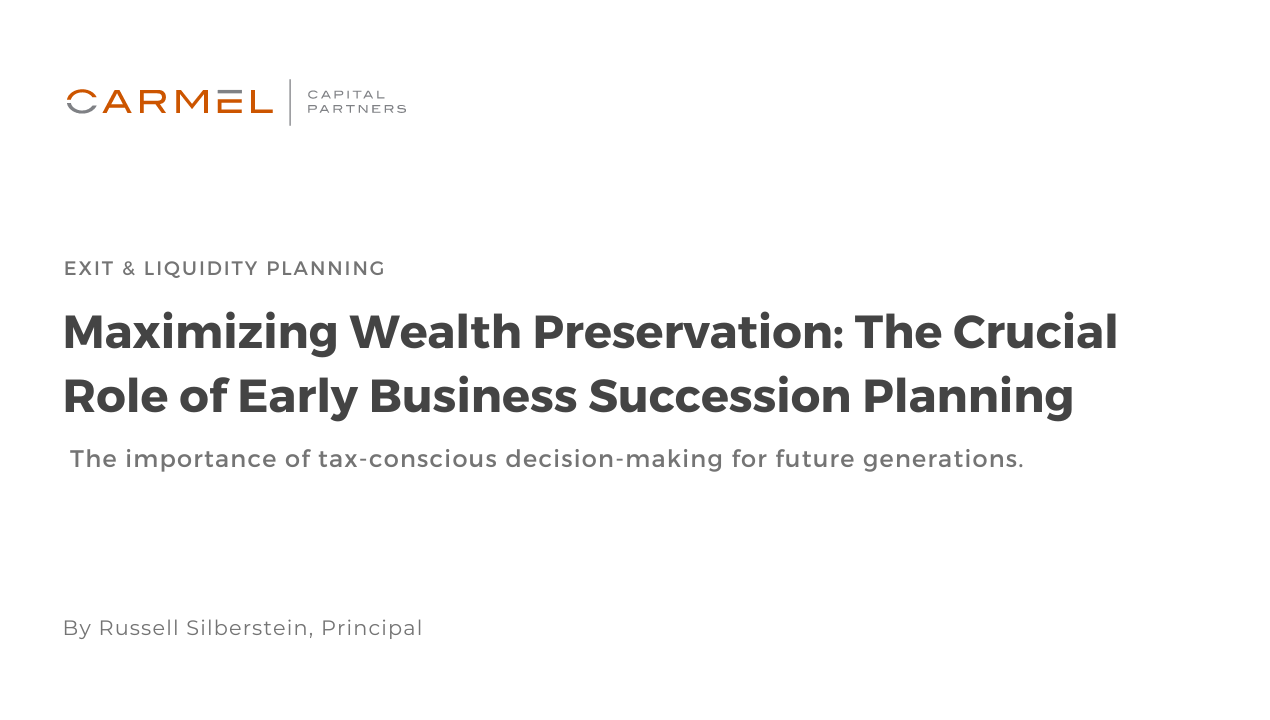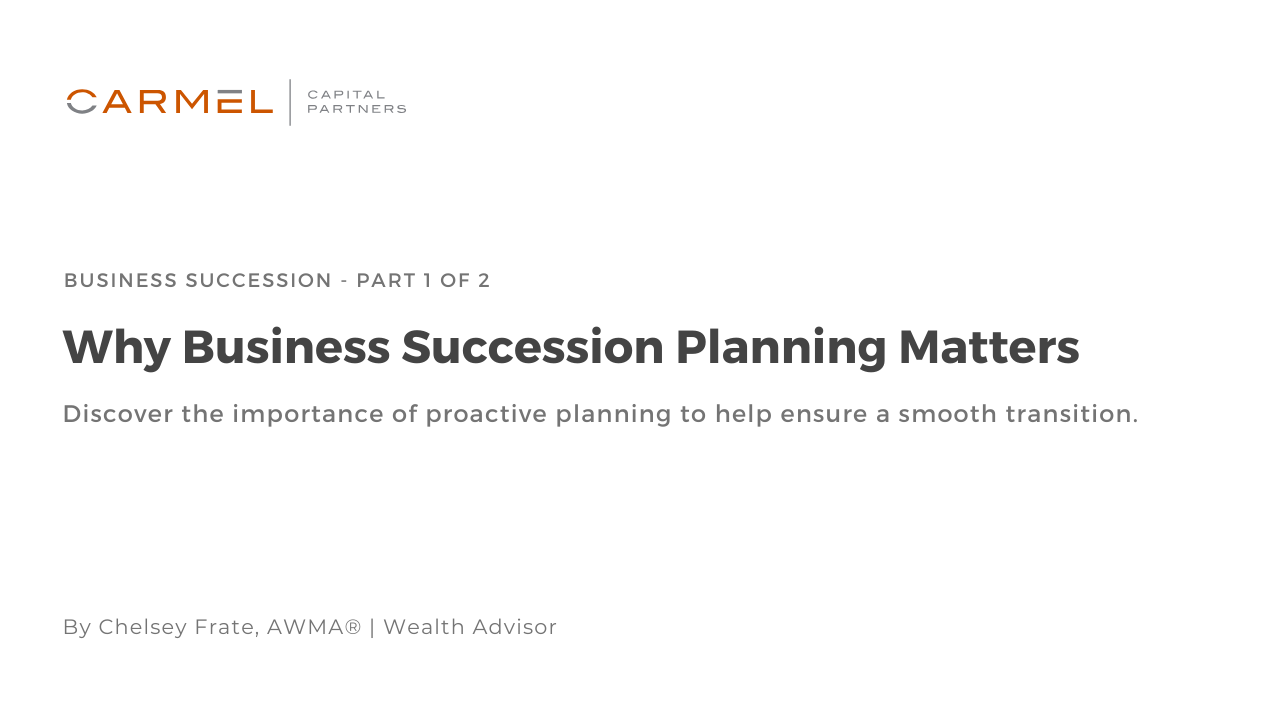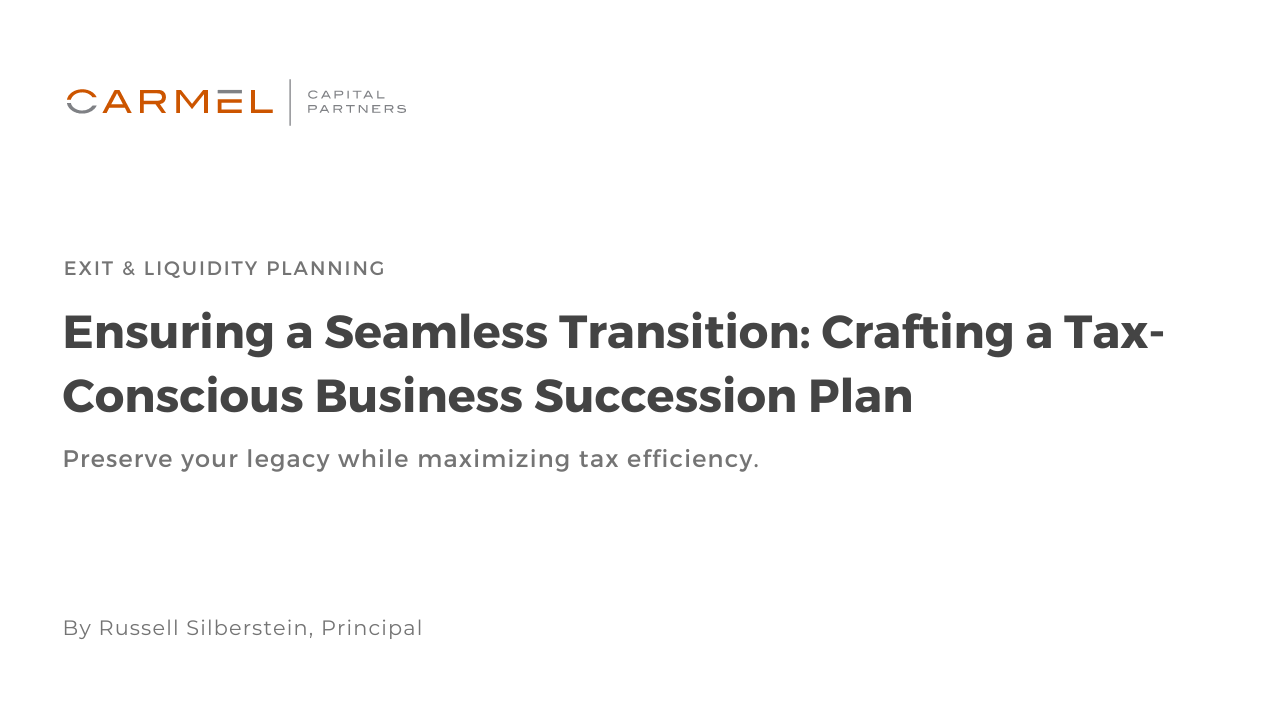Maximizing Wealth Preservation: The Crucial Role of Early Business Succession Planning
For the families we serve, the accumulation of assets and the growth of their businesses are often a result of years of hard work, dedication, and...
4 min read
 Chelsey Frate
:
October 2, 2025 10:00 AM
Chelsey Frate
:
October 2, 2025 10:00 AM
Planning a successful business transition takes strategy and execution. Now that you know why succession planning matters from Part 1, it’s time to focus on how. With a clear roadmap, the process can feel manageable.
This guide offers actionable steps to create a thorough, efficient succession plan. From choosing the right successors to setting timelines, here’s what you need to secure your business’s future.
Before jumping into the logistics, take a moment to establish what you want to achieve with your succession plan. Your choices should reflect both business interests and personal priorities.
Ask yourself:
By answering these questions upfront, you’ll create a foundation for every decision that follows.
Selecting the right successor is the backbone of your plan. This step will shape how easily your business transitions into the next era of leadership. Here's a tactical approach:
Internal Candidates:
External Options:
Tip: Provide all internal successors with leadership training or mentorship opportunities early. A well-prepared successor is more likely to ensure stability and growth long after your exit.
The complexity of succession planning requires a mix of legal, financial, and operational expertise.
Building the right advisory team early can streamline your planning process:
Having dedicated professionals to guide each segment removes guesswork and protects your interests.
An efficient business transition doesn’t happen overnight—it can take several years of preparation. Breaking down the process into phases will help manage expectations and ensure deadlines are met.
A structured timeline reduces ambiguity and allows smooth progress at every stage.
Preparation is key to protecting business value and avoiding surprises down the line. This stage ensures that financial health and legal clarity are polished before any transition takes place.
Transparency is paramount during leadership changes to maintain trust and confidence. Creating a comprehensive handover strategy will minimize disruptions.
By the time the transition culminates, your successor will feel prepared, and your stakeholders will feel secure in the business’s direction.
For family-owned businesses, emotions and expectations often intertwine with succession decisions. Avoid conflicts by addressing these dynamics head-on:
Intention and transparency go a long way in preserving harmony while safeguarding the business’s future.
How will you spend your time post-business? Whether your goal is relaxation, philanthropy, or to continue to work, this is your chance to focus on your life’s next stage. Retirement needs through a financial plan.
If time permits, spend a year or two preparing for this new phase so that your transition feels empowering rather than uncertain.
Business succession is about planning to win. With a combination of preparation, expertise, and intentional strategies, you can confidently step away knowing your business will thrive and your personal goals are met.
By implementing these insights, you’ll create a seamless, rewarding transition process for yourself, your successor, and every stakeholder involved.
Now is the time to put pen to paper, reach out to trusted advisors, and lay the groundwork for long-term success. Remember, succession planning isn’t a one-size-fits-all task. Customize these steps to align with the unique needs of your business and future goals.
Your next chapter awaits—and your business’s legacy is depending on the actions you take today.
Make success intentional. By adhering to this guide and seeking expert advice, you’re one step closer to achieving a smooth and rewarding transition, securing not only your legacy but also the stability and success of the next generation.
The content is developed from sources believed to be providing accurate information. The information in this material is not intended as tax or legal advice. Please consult legal or tax professionals for specific information regarding your individual situation. The opinions expressed and material provided are for general information and should not be considered a solicitation for the purchase or sale of any security. Investment advisory services are offered through Carmel Capital Partners, an SEC Registered Investment Advisor.

For the families we serve, the accumulation of assets and the growth of their businesses are often a result of years of hard work, dedication, and...

After years of hard work building your business, the last thing you want is uncertainty when you step away. Yet, many business owners face this due...

For wealthy families and entrepreneurs, building a successful business is a testament to their vision, hard work, and entrepreneurial acumen....